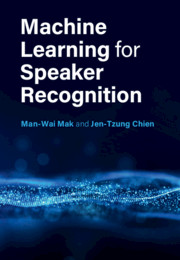Refine search
Actions for selected content:
48453 results in Computer Science
LINGUA CHARACTERICA AND CALCULUS RATIOCINATOR: THE LEIBNIZIAN BACKGROUND OF THE FREGE-SCHRÖDER POLEMIC
- Part of
-
- Journal:
- The Review of Symbolic Logic / Volume 14 / Issue 2 / June 2021
- Published online by Cambridge University Press:
- 29 June 2020, pp. 411-446
- Print publication:
- June 2021
-
- Article
- Export citation
PLANS AND PLANNING IN MATHEMATICAL PROOFS
- Part of
-
- Journal:
- The Review of Symbolic Logic / Volume 14 / Issue 4 / December 2021
- Published online by Cambridge University Press:
- 29 June 2020, pp. 1030-1065
- Print publication:
- December 2021
-
- Article
- Export citation
AN EXPRESSIVIST ANALYSIS OF THE INDICATIVE CONDITIONAL WITH A RESTRICTOR SEMANTICS
- Part of
-
- Journal:
- The Review of Symbolic Logic / Volume 14 / Issue 2 / June 2021
- Published online by Cambridge University Press:
- 29 June 2020, pp. 487-530
- Print publication:
- June 2021
-
- Article
- Export citation
PhD Abstracts
- Part of
-
- Journal:
- Journal of Functional Programming / Volume 30 / 2020
- Published online by Cambridge University Press:
- 29 June 2020, e18
-
- Article
-
- You have access
- Export citation

Machine Learning for Speaker Recognition
-
- Published online:
- 26 June 2020
- Print publication:
- 19 November 2020
1 - Information Literacy and Information Practice
-
- Book:
- Mapping Information Landscapes
- Published by:
- Facet
- Published online:
- 23 July 2020
- Print publication:
- 26 June 2020, pp 1-22
-
- Chapter
- Export citation
Bibliography and References
-
- Book:
- Mapping Information Landscapes
- Published by:
- Facet
- Published online:
- 23 July 2020
- Print publication:
- 26 June 2020, pp 185-198
-
- Chapter
- Export citation
Foreword
-
-
- Book:
- Mapping Information Landscapes
- Published by:
- Facet
- Published online:
- 23 July 2020
- Print publication:
- 26 June 2020, pp xi-xii
-
- Chapter
- Export citation
Frontmatter
-
- Book:
- Mapping Information Landscapes
- Published by:
- Facet
- Published online:
- 23 July 2020
- Print publication:
- 26 June 2020, pp i-iv
-
- Chapter
- Export citation
Index
-
- Book:
- Mapping Information Landscapes
- Published by:
- Facet
- Published online:
- 23 July 2020
- Print publication:
- 26 June 2020, pp 199-201
-
- Chapter
- Export citation
Appendices
-
- Book:
- Mapping Information Landscapes
- Published by:
- Facet
- Published online:
- 23 July 2020
- Print publication:
- 26 June 2020, pp 177-184
-
- Chapter
- Export citation
List of Figures
-
- Book:
- Mapping Information Landscapes
- Published by:
- Facet
- Published online:
- 23 July 2020
- Print publication:
- 26 June 2020, pp ix-x
-
- Chapter
- Export citation
4 - Three Psychogeographies
-
- Book:
- Mapping Information Landscapes
- Published by:
- Facet
- Published online:
- 23 July 2020
- Print publication:
- 26 June 2020, pp 67-86
-
- Chapter
- Export citation
3 - Mapping and Power
-
- Book:
- Mapping Information Landscapes
- Published by:
- Facet
- Published online:
- 23 July 2020
- Print publication:
- 26 June 2020, pp 51-66
-
- Chapter
- Export citation
Introduction
-
- Book:
- Mapping Information Landscapes
- Published by:
- Facet
- Published online:
- 23 July 2020
- Print publication:
- 26 June 2020, pp xiii-xx
-
- Chapter
- Export citation
5 - Maps of Cognition
-
- Book:
- Mapping Information Landscapes
- Published by:
- Facet
- Published online:
- 23 July 2020
- Print publication:
- 26 June 2020, pp 87-132
-
- Chapter
- Export citation
7 - Conclusion
-
- Book:
- Mapping Information Landscapes
- Published by:
- Facet
- Published online:
- 23 July 2020
- Print publication:
- 26 June 2020, pp 167-176
-
- Chapter
- Export citation
6 - Discursive Mapping of an Information Landscape
-
- Book:
- Mapping Information Landscapes
- Published by:
- Facet
- Published online:
- 23 July 2020
- Print publication:
- 26 June 2020, pp 133-166
-
- Chapter
- Export citation
Contents
-
- Book:
- Mapping Information Landscapes
- Published by:
- Facet
- Published online:
- 23 July 2020
- Print publication:
- 26 June 2020, pp v-viii
-
- Chapter
- Export citation
2 - Maps and Mapping
-
- Book:
- Mapping Information Landscapes
- Published by:
- Facet
- Published online:
- 23 July 2020
- Print publication:
- 26 June 2020, pp 23-50
-
- Chapter
- Export citation
